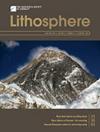印度中北部太古代邦德尔坎德克拉通边缘的古-中元古代裂陷作用:U-Pb SHRIMP锆石资料定年及其地球动力学意义
IF 1.7
4区 地球科学
Q3 GEOCHEMISTRY & GEOPHYSICS
引用次数: 0
摘要
本文介绍了位于太古代Bundelkhand克拉通边缘的瓜里奥尔盆地底部砂岩单元(Par组)、基底花岗岩和博帕尔盆地砂岩的新年代学(U-Pb SHRIMP)和地球化学数据。地球化学变异图表明,瓜廖尔盆地和博帕尔盆地的砂岩单元形成于裂谷被动边缘构造环境。与瓜廖尔盆地花岗岩锆石中保存的岩浆特征相比,两个盆地的砂岩碎屑锆石在尺寸上都是碎片状和多峰状的。基底花岗岩的岩浆锆石年龄为207Pb/206Pb,约为2538±2 Ma。瓜廖尔盆地同心岩浆分带砂岩碎屑锆石的加权平均年龄为2564±24 Ma。瓜廖尔盆地碎屑锆石U-Th呈斑片状分布,超过岩浆分带,平均年龄为2044±2 Ma。Bhopal盆地碎屑锆石年龄分别为2511±5 Ma、1694±6 Ma和1355±9 Ma。博帕尔盆地砂岩中存在~2540 Ma的同心带和合锆石群,表明它们来源于年代相近的花岗岩。因此,认为在博帕尔盆地下方存在本德尔坎德克拉通花岗岩的伸展。瓜廖尔花岗岩的2500 Ma与全球岩浆活动有关,导致扩展Ur在~2500 Ma稳定。瓜廖尔盆地和博帕尔盆地的2048和1355 Ma分别是盆地内最下层地层单元的最大沉积年龄(MDA)。MDAs分别为柱状构造时期乌尔伸展期和努纳或哥伦比亚伸展期沿本德尔坎德克拉通边缘被动边缘盆地形成的时间。本文章由计算机程序翻译,如有差异,请以英文原文为准。
Paleo-Mesoproterozoic Rifting Along the Margins of Archean Bundelkhand Craton North-Central India: Timing the Event from U–Pb SHRIMP Zircon Data and Their Geodynamic Implications
In this article, novel geochronological (U–Pb SHRIMP) and geochemical data are presented from the lowermost sandstone unit (Par formation), basement granites of Gwalior Basin and sandstones from the Bhopal Basin, located along margins of the Archaean Bundelkhand Craton. The geochemical variation diagrams imply that sandstone units in the Gwalior and Bhopal Basins were deposited in rift-induced passive margin tectonic settings. In contrast to the magmatic features that are preserved in the zircons of granite of the Gwalior Basins, detrital zircons from sandstones of both basins are fragmentary and polymodal in size. The magmatic zircon grains from the basement granites yield a 207Pb/206Pb concordant age of 2538 ± 2 Ma. A group of detrital zircons from the sandstone of the Gwalior Basin with concentric magmatic zonation yield a weighted mean average age of 2564 ± 24 Ma. The detrital zircons from Gwalior Basin exhibit a patchy U-Th distribution overgrowing the magmatic zonation yield average age of 2044 ± 2 Ma. The detrital zircons from the Bhopal basin yield three distinct concordant ages of 2511 ± 5, 1694 ± 6, and 1355±9 Ma. The presence of ~2540 Ma concordant zircon population with concentric zonation in the sandstone of Bhopal Basin suggests their derivation from the granite of similar age. Therefore, an extension of Bundelkhand Craton granite below the Bhopal Basin is suggested. The 2500 Ma ages from the Gwalior granites are linked to global magmatic activity leading to the stabilization of extended Ur at ~2500 Ma. The 2048 and 1355 Ma ages from the Gwalior and Bhopal Basins, respectively, are concluded as the maximum depositional age (MDA) of the lowermost stratigraphic units within the basins. The MDAs are concluded to be the timings of passive margin basin formations along margins of the Bundelkhand Craton during extended Ur and Nuna or Columbia disintegration, respectively, during plume-driven tectonics.
求助全文
通过发布文献求助,成功后即可免费获取论文全文。
去求助
来源期刊

Lithosphere
GEOCHEMISTRY & GEOPHYSICS-GEOLOGY
CiteScore
3.80
自引率
16.70%
发文量
284
审稿时长
>12 weeks
期刊介绍:
The open access journal will have an expanded scope covering research in all areas of earth, planetary, and environmental sciences, providing a unique publishing choice for authors in the geoscience community.
 求助内容:
求助内容: 应助结果提醒方式:
应助结果提醒方式:


